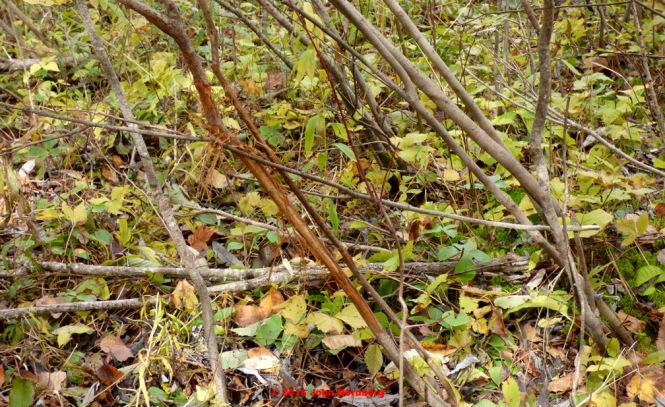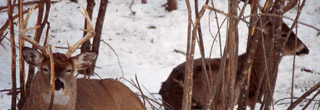Buck bedded after first attempt to shed velvet.
It’s August 31, a momentous day in the lives of all antlered whitetail bucks. A few days ago, hormonal changes that were set in motion in whitetail bucks by a certain ratio of darkness to sunlight (photoperiodism) in July caused the blood flow to velvet covering their now completely developed anthers to shut down. This caused velvet to begin rotting, in turn attracting hordes of flesh-eating insects such as flies and yellowjackets.

Buck scratching his nose to relieve itching from bot fly larvae.
Adding to a buck’s discomfort at this time is a different annoying horde — bot fly maggots crawling around in its nasal passages and sinuses.

Buck sweeping antlers through milkweeds to remove blood and tatters of velvet from antlers.
When a resting buck can stand all this no longer, it will leap from its bed, rush to a nearby woody bush or small diameter tree and begin vigorously rubbing bloody velvet from it antlers, after which it will sweep its antlers from side to side in tall grass or other dense vegetation in an attempt to remove remaining tatters of velvet and blood. Usually, however, it takes three days to finish the job.

Dried rubs like this on small multiple stems found in September or October are made by mature bucks shedding velvet. They are usually found near buck bedding areas.

Immediately thereafter begins the season during which antlered bucks begin to battle for highest possible positions in their square-mile buck pecking orders and the right to breed.
Note: velvet rubs made in early September are almost always found in or very near buck bedding areas.

